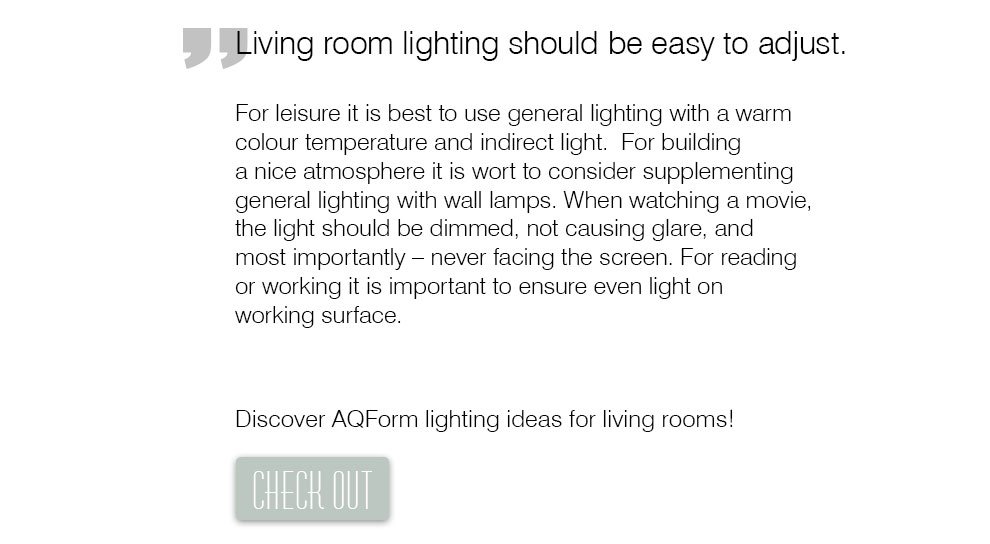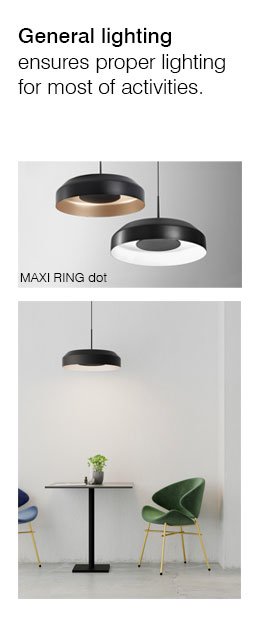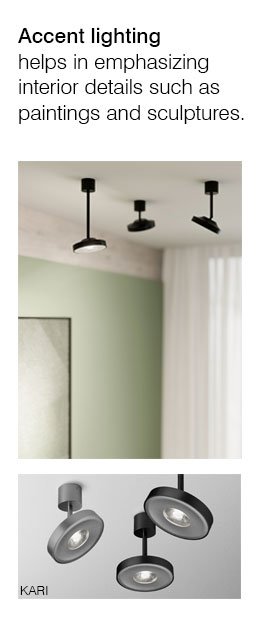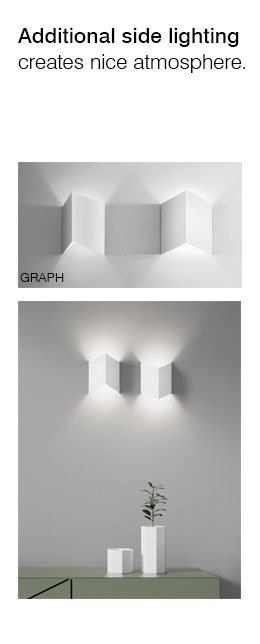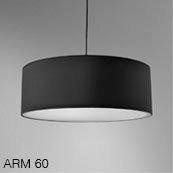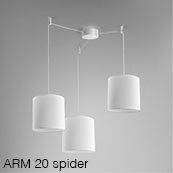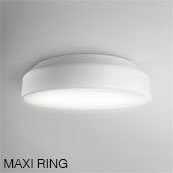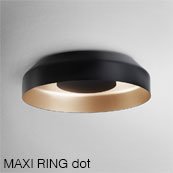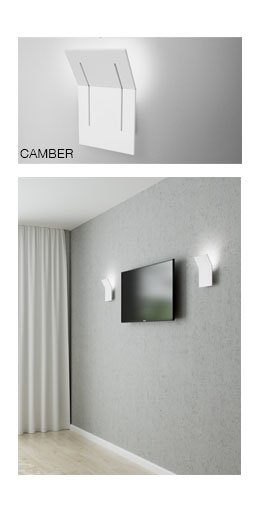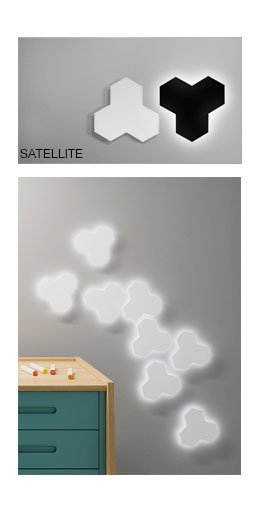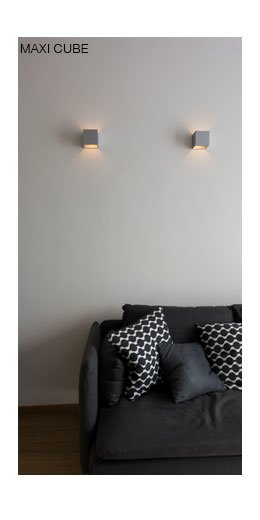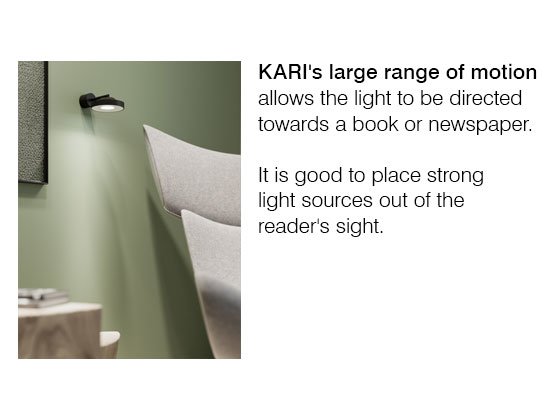Arranging the living room lighting can be challenging. If you want to bring together users' needs, functional requirements, aesthetics and daylight, here is what you can do. First of all, you can use lamps with dimming or colour temperature control. Such functions allow you to maintain the flexibility of lighting: you can create a romantic atmosphere as in a cozy cafe but also make the lighting conditions more accurate to working needs – while using the same lighting fittings. Secondly, it is worth designing accent lighting for the living room. The flexibility of the living room lighting is important because this room often combines many functions. What other challenges are there when arranging the living room lighting?
Modern living room lighting – how to adapt the lighting to a desired function?
When designing lighting for the living room, you should begin by defining all the functions of this space. Then it is good to decide which functions are of priority. This will allow you to define your requirements for the lighting design.

If the living room has only a leisure function, it is best to use general lighting with a warm colour temperature. You can also add accent lighting for better exposition of paintings or decorations. For such tasks it is best to use adjustable luminaires with beam angle that isn’t too wide (e.g. 24 °). This combination ensures that the light will go exactly to the desired place and precisely illuminate a picture, sculpture or a vase. Spotlights with precision optics such as QRLED mini, PET mini or KARI would work best here. In addition, general ceiling lighting should be supplemented with wall lamps Soft side light allows to create a climatic atmosphere. This is valuable especially in the evening when we do not need strong, high light.

What is interesting, is that currently there are almost no official standards of the parameters that the home lighting should meet (e.g. in terms of light intensity or uniformity). Users' needs are the only guideline when arranging the living room lighting – that’s why the most important thing is to define the function that the living room performs at home or flat. When we determine what are those needs, we can proceed to the design of light scenes for all activities in question.

Multifunctional living room - multifunctional lighting
The lighting system should adapt to all types of visual tasks that will be performed in the living room. For example, the room can be used for: watching TV, reading books, playing board games, afternoon naps or eating meals. As far as the budget and technical possibilities are concerned, it is good to design lighting that provides good conditions for all or at least most important functions of the room. Let's look at some of the most popular ones:
Leisure: if the living room is above all a place of relaxation, it is best to provide warm light (2700 K). In a room designed primarily for rest, it is worth giving up exposed light sources and instead use wall lamps and indirect light, which reduce glare. Lampshades and cloches (such as in ARM luminaires) or screens (such as in popular MAXI RING) – cause light scattering. Thanks to it, light is softer and more delicate. The luminaires with soft reflected light, for example the new version of MAXI RING dot luminaires, are an especially interesting proposition.
When choosing lighting for the living room, it is worth considering the option of adjusting the luminous flux and colour temperature. Then the light will meet the current needs and changing conditions of daylight. Such functions are offered by modern integrated LED luminaires. Some advanced light sources also allow you to benefit from controlling even non-integrated luminaires One of novelties is the CARUS light source with the E27 base, also referred as standard base, which gives the possibility of wireless control of colour temperature and luminous flux.
Examples of luminaires suited for general lighting:
Watching TV: when watching a movie, the light should be dimmed, not causing glare, and most importantly – never facing the screen. Too much light can spoil the atmosphere of a romantic session or cool the tension of the action film. However, nobody likes to hit the table when reaching for snacks, so it is worth to take care of some supplementary lighting. In this role, wall and standing luminaires that emit indirect light will perform well.
Examples of fixtures for supplementary lighting – wall luminaires:
Reading: while the lighting conditions are perceived similarly by different people when watching television, with more demanding visual tasks – such as reading – the reader’s eye sight is a very important factor. The weaker the sight, the more intensive light will be needed for comfortable reading. 500 lx can be accepted as a standard. However, there are people who like to read with 100 lx lightor those for whom the comfortable light intensity starts above 1000 lx.
For reading – general lighting in the form of hanging luminaires combined with reading-dedicated lighting (such as desk lamps or directional wall lighting, allowing the light to be directed towards a book or newspaper) works best. It is recommended to place strong light sources away from the viewer's sight. The directional luminaire should be located behind the reader. Best place for hanging luminaire would be right above the head or reading table so that the light fell without a shadow on the book.
In simple cases and in small spaces it is possible to provide sufficient lighting in the living room even with one lighting fixture. MAXI RING with dimming function can cope with the majority of those challenges. Maybe with the exception of additional indirect lighting - here it is better to reach for wall luminaires such as QUPET 2 LED with a very soft light or GRAPH - a wall lamp with a distinct shape and a nice light distribution. In more demanding cases, it may be necessary to use several luminaires of various types and an advanced control system.
It is worth paying attention when choosing lamps and lighting system in the living room, which is usually the central place in the apartment. The most important thing is to identify the needs of the household and match the lighting in the living room to those needs. When relaxing, general lighting with a warm colour and an invisible light source works best. It is also worth taking care of indirect light from wall lamps. When watching TV, many people will be happy to use the dimming of light, but for the time of doing homework with the child it will be important to evenly illuminate the work surface.
Check which AQForm lighting will work best in the living room.
